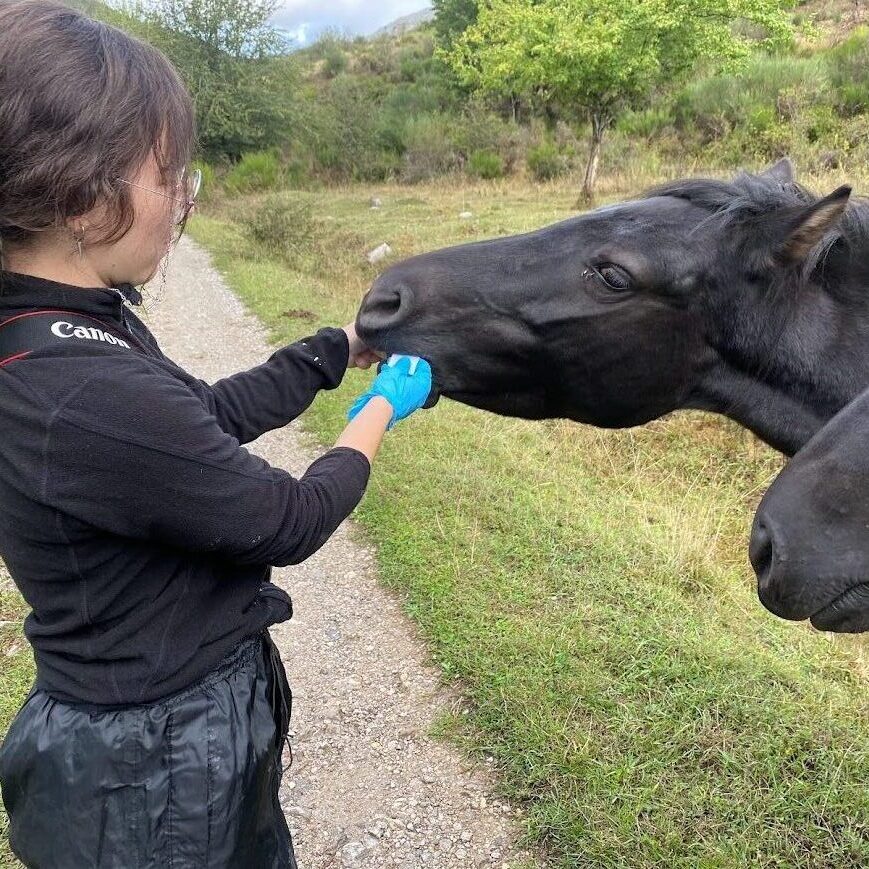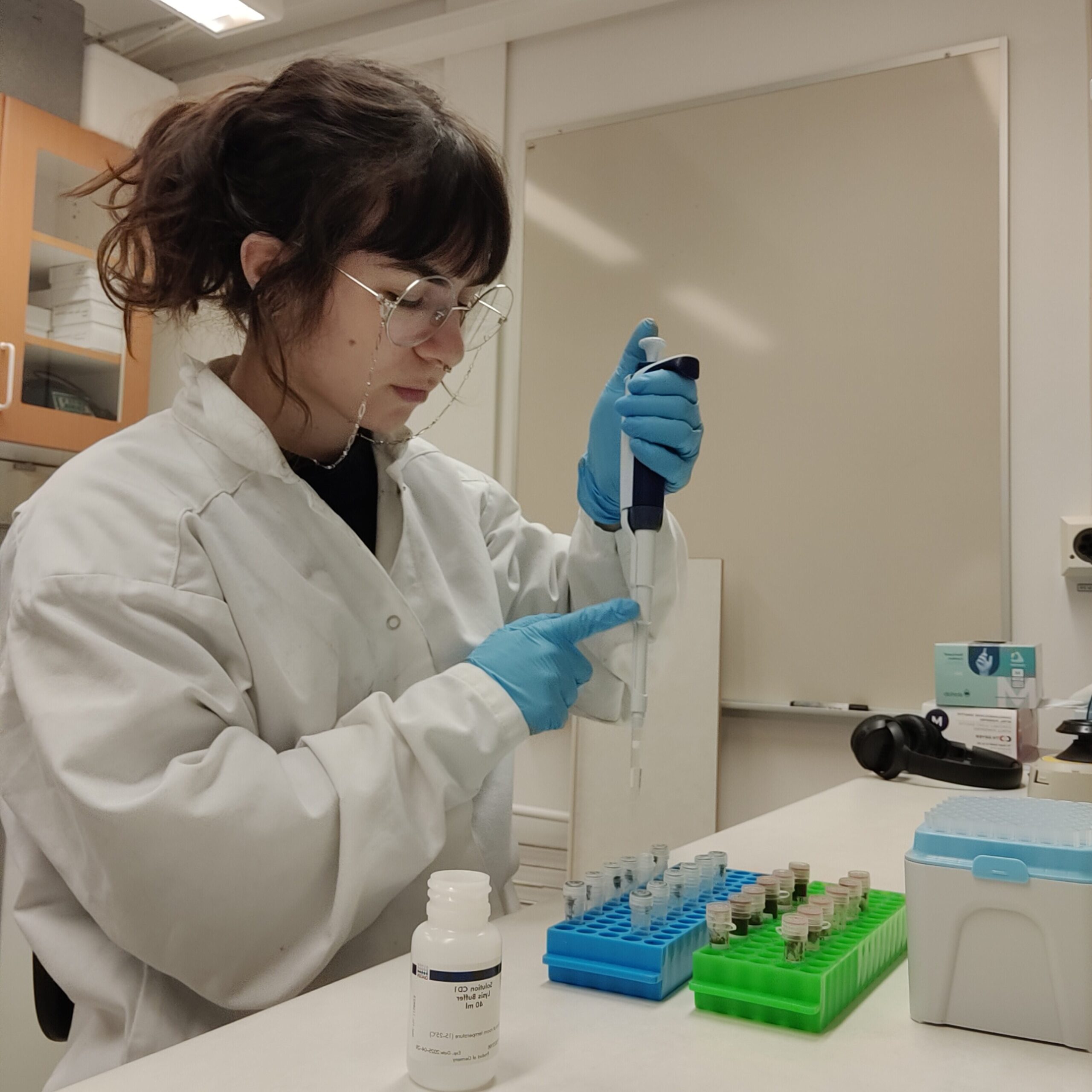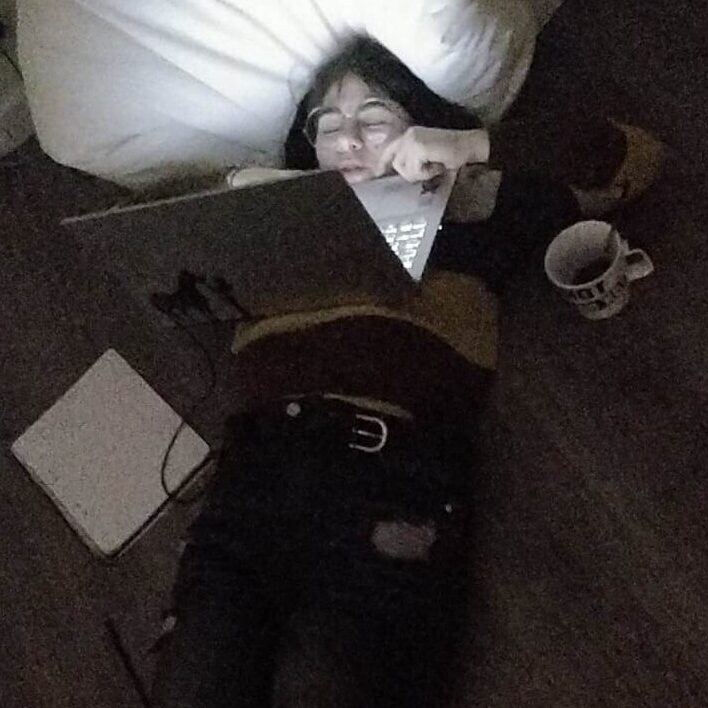


The herd of 15 feral horses was located in Valle de Anciles, Riano Spain. Free to roam minimal human intervention. Sampling was done by following the horses during September 2023. Saliva was taken by swiping the FTA cards on the inside of the horse’s upper lip by coaxing them with bread. The faecal samples were taken by pressing the FTA card on fresh feces.
The DNA was extracted from the FTA-card in a lab at LiU. The samples then underwent a Quadrad protocol to prepare them to be sent off to a third party for RAD-sequencing.
The sequenced data was demultiplexed using Bash to sort out all individual barcodes from the different samples. The data received had already demultiplexed the outers. The protocol followed in this study thus focused on demultiplexing the inners, quality control, adapter 10 trimming and handling possible errors from the sequencing process.
The files were then transferred to Rstudio where the data was analysed using the Mann Whitney test, Wilcoxon test, Hardy-Weinberg equilibrium, ind PCA as well as the Fis index.

CONTACT
Email: Gaia.resmini@gmail.com – Instagram: gaia_resmini